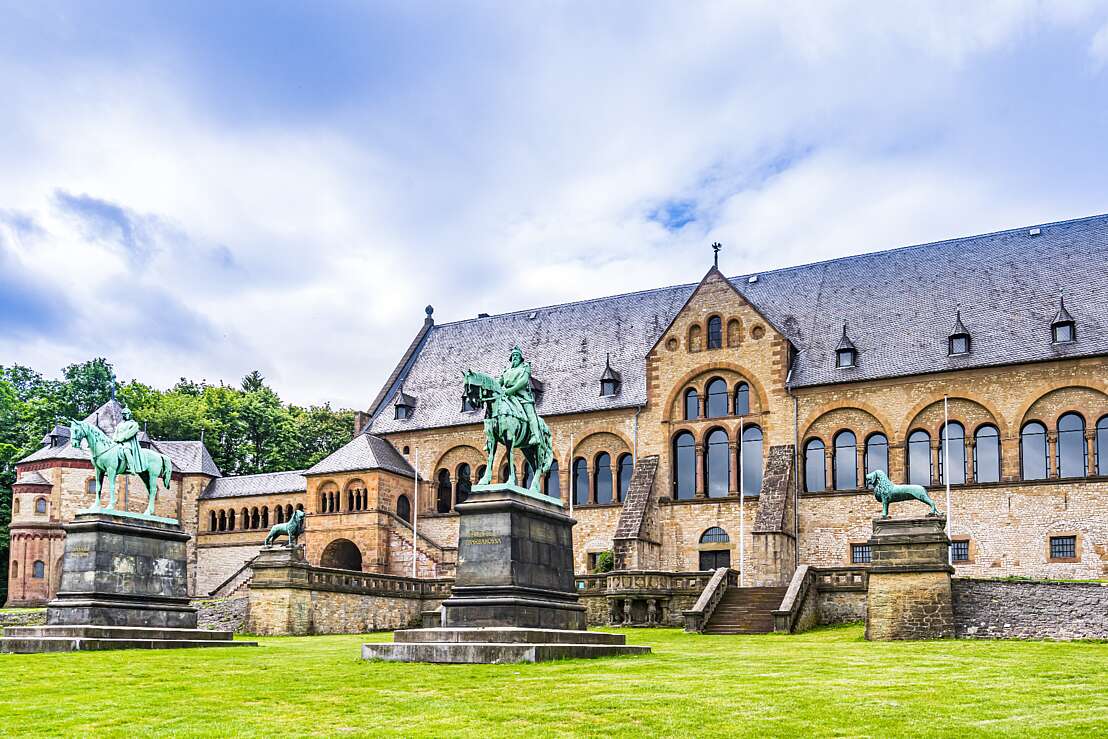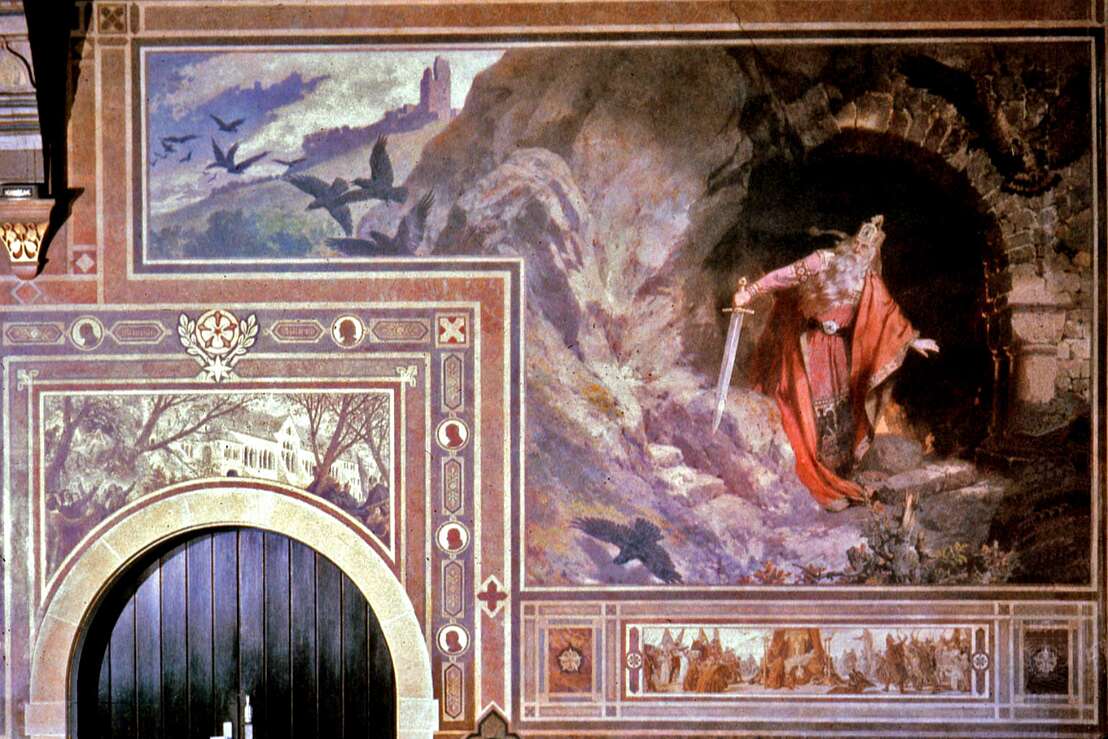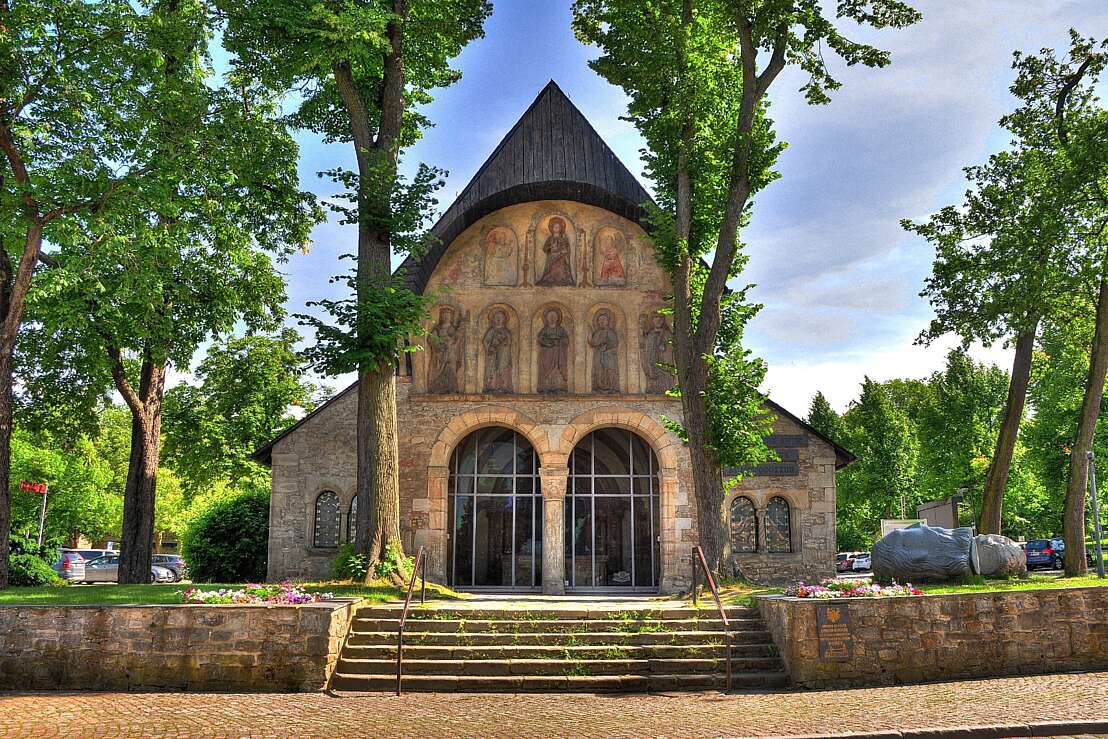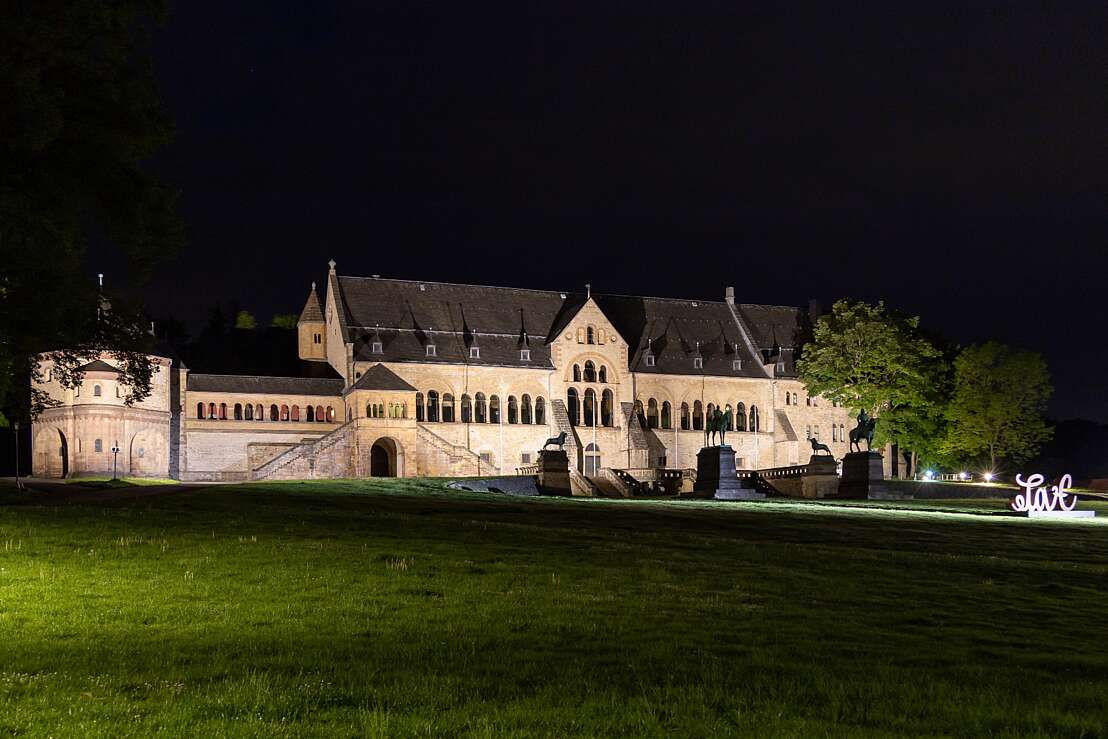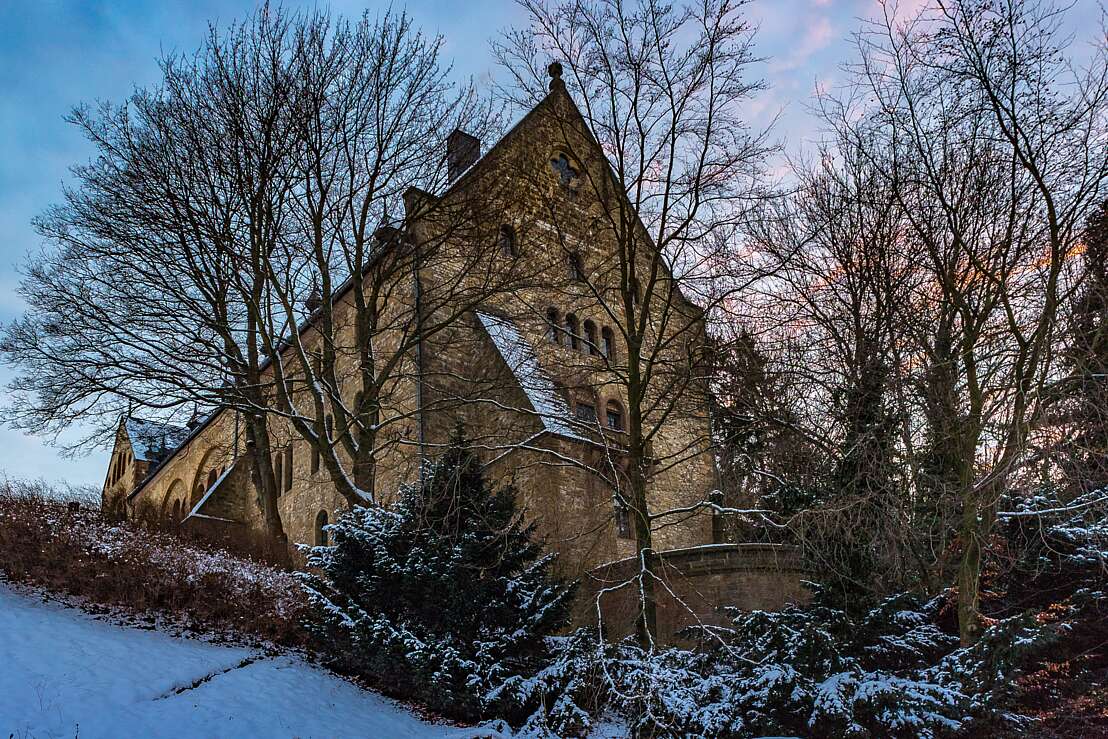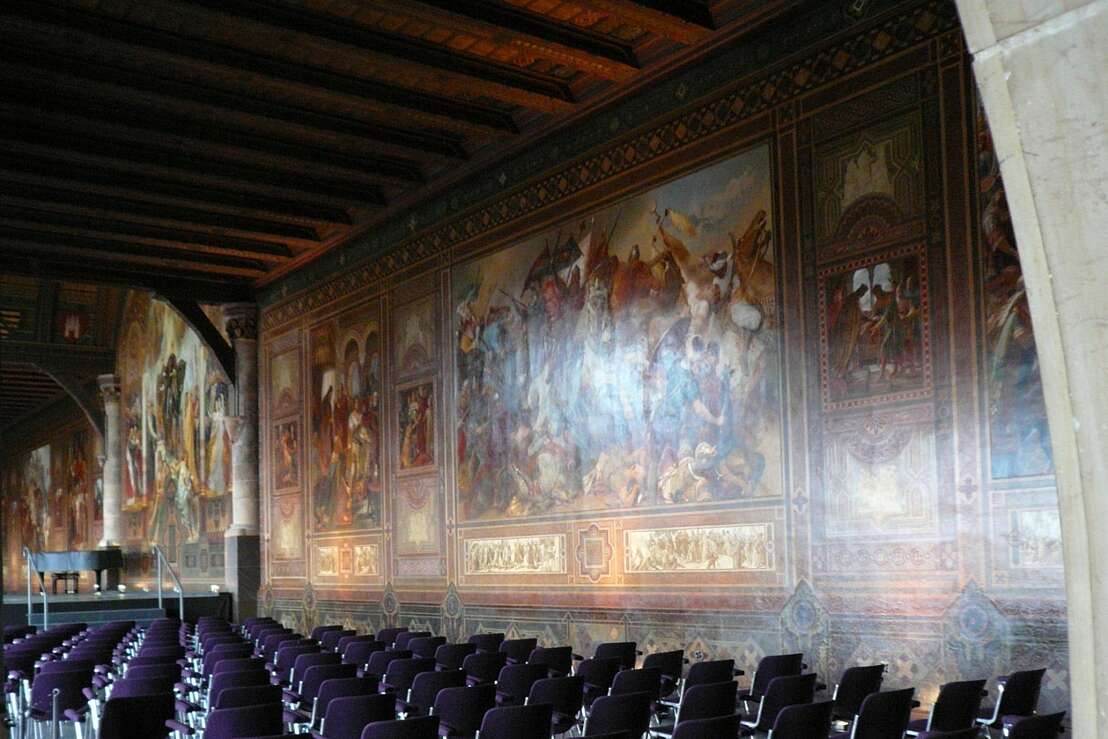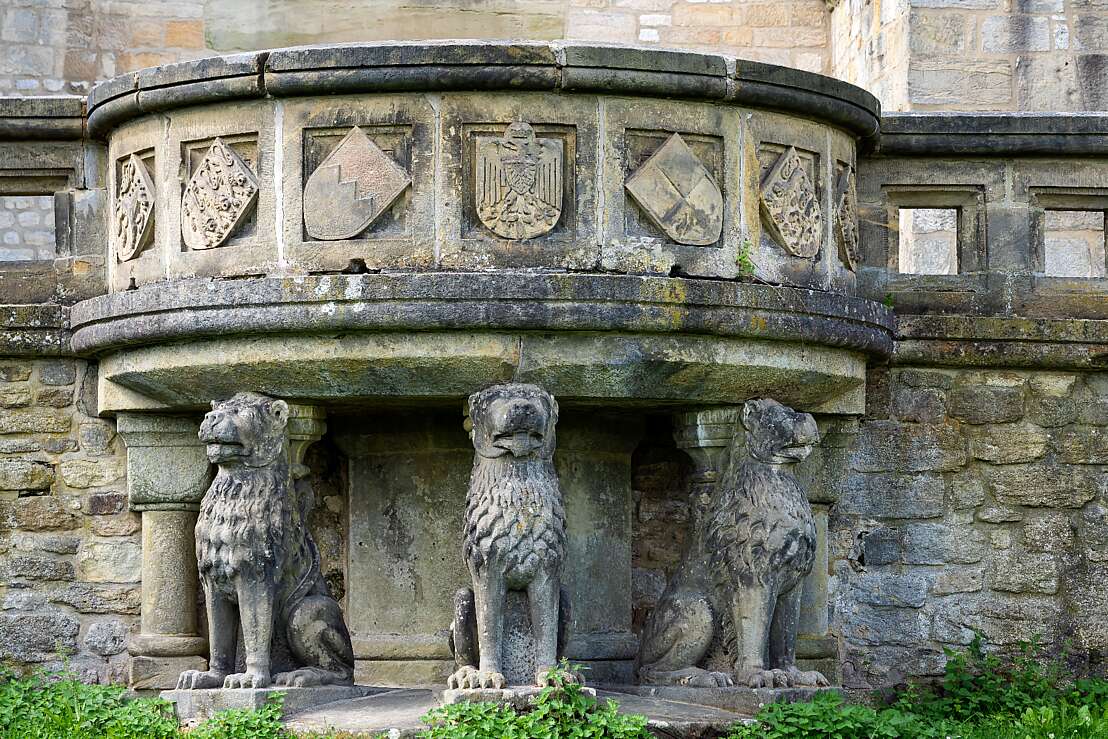Kaiserpfalz Goslar
on the traces of German history
UNESCO World HeritageHarzspots Vacation planner
| Name | Date |
|---|
At the foot of the Rammelsberg mountain rises one of the greatest sights in the Harz mountains - the Kaiserpfalz Goslar. When you look around this historic building, you are walking in the footsteps of history. Henry III of the Salian dynasty, one of the most educated monarchs of his time, was not yet wearing the insignia of the Roman Emperor of the German Nation when he commissioned the completion of the Imperial Palace of Goslar in 1040. It was built on the foundations of the first palace, which had already been erected here in 1005 by the Ottonian Henry II. A few years later, Henry III ended the so-called "papal schism" and with it the Pope's dependence on the Roman nobility. The monarch's heart was buried in the Palatine Chapel of St. Ulrich under a tomb slab.
Magnificent paintings in the Emperor's Hall
European history was written in the imperial palace of Goslar for more than two centuries. The legendary imperial and court days were held here. When you stroll through the spacious halls of the building, you should take a closer look at the impressive paintings on the walls, for they tell the story of this complex, which has been designated a UNESCO World Heritage Site, especially in the large Kaisersaal. The area in the south of the city is 340 metres long and 180 metres wide. The Kaiserpfalz Goslar is considered the best preserved secular building of the 11th century on German soil.
The site of the imperial diet
When Henry III died in Goslar in the late summer of 1056, Pope Victor II stayed in the imperial palace for a few weeks as a guest of the German monarch. In later years, today's tourist attraction was repeatedly the scene of disputes between the noble authorities of the time. However, a glorious event took place there in July 1219, when the Imperial Diet was held in the Palatinate under the reign of Frederick II. Almost half a century later, William of Holland was the last German king to stay here. Over a long period of history, the Imperial Palace of Goslar fell into disrepair and was not restored until 1879, thanks to the initiative of Emperor Wilhelm I. Today, the building presents itself once again as a magnificent monument. Today, the building is once again an outstanding example of German Romanesque architecture.
Kaiserbleek 6
38640 Goslar
| E-Mail: | kaiserpfalz@goslar.de |
| Telefon : | 05321-704437 |
Harzspots gives you the
Komoot Harz Region Package for free!
Use our voucher from the Outdoor Navigators Komoot and get the „"Harz Regions Package“ free of charge. From now on you can get to know all hiking and cycling routes digitally and, if you wish, also voice-guided!
